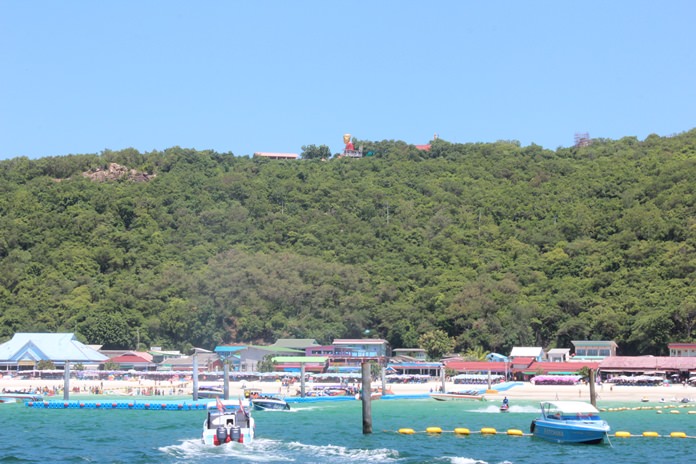
PATTAYA – Consultants have completed their long-awaited survey of Koh Larn’s tourist capacity, the first step toward new zoning laws to protect the island’s ecosystem.
Ampai Sakdanukuljit, assistant director of the Tourism and Sports Council, presented the Silapakorn University report his group commissioned to Pattaya Deputy Mayor Apichart Virapal, Tourism Authority of Thailand Pattaya office Director Suladda Sarutilavan, and police and military officials June 5.
The 3,411-rai island, the report said, has 1,567 hotel rooms and attracts an average of 10,000 visitors a day, with that number more than doubling in high season and on holidays.
Its six major beaches are visited mostly by Chinese (40 percent), Russian (30 percent) and Thai (20 percent) tourists who generate more trash than the island can handle.
Silapakorn calculated the island produces anywhere between 50 to 300 tons of trash a day. Pattaya, meanwhile, is said to generate 450 tons a day.
Koh Larn previously could tow about 20 tons of trash to the mainland each night, but recent boat breakdowns have cut that. The island is now preparing a budget to purchase new barges.
Recycling campaigns have been launched, but have had little impact, the report concluded.
Consultants said Koh Larn has the potential to grow, but it lacks an adequate number of high-standard accommodation for its number of tourists and the environmental problems are growing.
The report will be passed on to the city council to consider as part of its plan to control the island’s growth, including possible limits on daily tourist arrivals or imposition of a fee to visit the island, which would suppress visits and generate funds for environmental protection.
 |
 |





